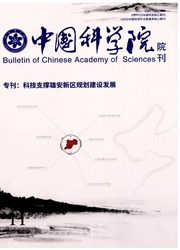

 中文摘要:
中文摘要:
【摘要】生物计算机是以核酸分子作为“数据”,以生物酶及生物操作作为信息处理工具的一种新颖的计算机模型。生物计算的早期构想始于1959年,诺贝尔奖获得者Feynman提出利用分子尺度研制计算机;1994年,图灵奖获得者Adleman提出基于生化反应机理的DNA计算模型;在生物计算机方面突破性工作是北京大学在2007年提出的并行型DNA计算模型,将具有61个顶点的一个3.色图的所有48个3.着色全部求解出来,其算法复杂度为3”,而此搜索次数,即使是当今最快的超级电子计算机,也需要13217年方能完成,该结果似乎预示着生物计算机时代即将来临。文章重点介绍了生物计算机的产生背景及意义;DNA计算机,特别是中州I-型DNA计算机的基本原理、计算方法与步骤;DNA计算机的研究进展,特别指出在密码分析与破译等领域的应用;分析了DNA计算机的能力,指出了研究中的难点、发展趋势,最后对我国生物计算机发展提出了一些建议。
 英文摘要:
英文摘要:
In this paper, the S&T support project of CAS on geological disaster prevention in Zhangmu, Tibet, was introduced, some new thoughts on collaborative innovation were also presented. In the course of S&T-driven regional development, how to acquire scientific issues from actual demand, with the synergistic advantages in the system of policy-production-education-re- search-application, was also illustrated. Based on the chain design of innovation-promoted development, the paper aims to pro- vide a reference and enlightenment on the support role of S&T innovation for the national and local development of economy and society.
 同期刊论文项目
同期刊论文项目
 同项目期刊论文
同项目期刊论文
 期刊信息
期刊信息
